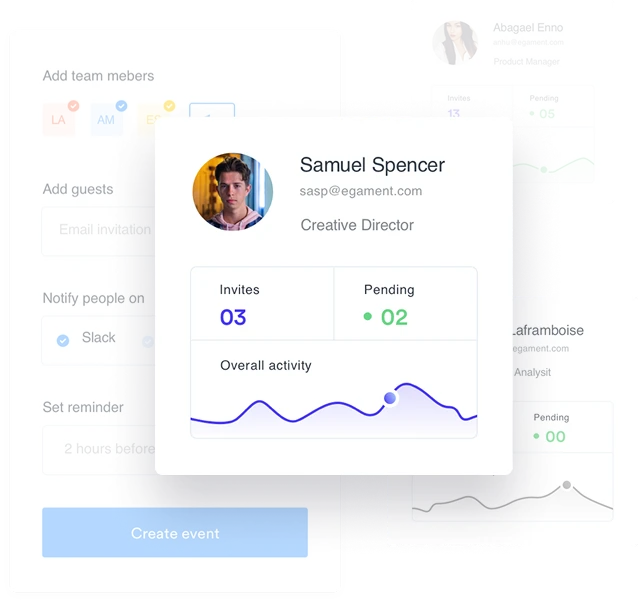Attendance might seem like one of the smallest, most routine tasks in higher education classrooms. A professor calls out names, marks the register, and the class begins. But when multiplied across hundreds of classes, dozens of faculty members, and entire academic years, this “simple” process reveals a staggering hidden cost.
Manual attendance management in higher education doesn’t just consume minutes—it drains hours, budgets, and institutional potential. What appears to be harmless administration is, in reality, a silent productivity leak that affects financial efficiency, instructional quality, and trust between stakeholders.
Faculty time lost to roll calls, staff salaries spent reconciling errors, and the compounding impact of human mistakes all translate into wasted resources that could otherwise be fueling innovation and learning. Add to this the risks of fraud, compliance issues, and declining parent satisfaction, and the true cost of manual attendance becomes undeniable.
This blog uncovers the unseen toll of manual systems—exploring their financial burden, educational impact, risks to compliance and trust, and the opportunity costs holding institutions back. Finally, it highlights how automation can turn attendance into a strategic driver of efficiency, safety, and growth.
Insert Image Suggestion: Visual of a professor marking attendance manually vs. an automated dashboard.
When it comes to hidden costs, the financial impact of manual attendance management systems is perhaps the most striking. What looks like a simple administrative step actually adds up to thousands of dollars in lost productivity and unnecessary labor.
On average, faculty spend about 10 minutes per class per day on manual attendance. That may not sound like much, but across a faculty of 50 staff members, the cumulative loss exceeds 400 hours every academic year. This isn’t just time lost from teaching—it’s paid hours that could have been used for instructional preparation, research, or student mentoring.
The problem doesn’t end there. Many institutions assign full-time administrative staff to reconcile attendance sheets, fix errors, and manage reports. These roles often cost between $70,000 and $100,000 annually—money spent not on advancing student outcomes but on correcting inefficiencies in outdated processes.
Every dollar spent on redundant manual processes is a dollar not invested in innovation. Instead of paying for staff to chase down attendance errors, institutions could be funding student support programs, digital transformation initiatives, or faculty development. The financial trade-off is clear: manual tracking represents not only direct salary costs but also a major opportunity cost in institutional growth.
Insert Table Here: Comparison of manual vs. automated attendance costs (time & money).
No matter how attentive faculty or staff may be, manual attendance management systems are inherently prone to human error. Paper-based attendance management typically carries an error rate of 1–3%, which may sound small but translates into dozens—or even hundreds—of inaccuracies across a semester in a medium-sized institution.
These errors range from something as simple as an overlooked name to more serious mistakes like incorrect, missing, or duplicated records. Over time, discrepancies accumulate and require hours of additional administrative work to resolve. In cases where reconciliation doesn’t happen quickly, institutions may face challenges in reporting accurate attendance data for compliance or audits.
The consequences can directly affect people. For instance, mismatched records can cause payroll inaccuracies for staff whose salaries are tied to attendance monitoring. Students, too, may face disputes regarding their attendance percentages, leading to grade penalties or loss of eligibility for scholarships and aid. Even a single mistake can ripple into conflicts, grievances, and a loss of trust in the institution’s processes.
By relying on outdated, manual processes, higher education institutions are not just accepting inefficiency—they are opening the door to avoidable disputes and long-term credibility risks.
Insert Image Suggestion: Illustration showing a paper attendance sheet with errors.
Attendance management is not just an administrative activity; it also directly affects instructional quality. For faculty, every minute spent calling names and marking registers is one less minute spent teaching. In smaller classes, this loss may feel manageable, but in large classrooms with multiple periods, the cumulative toll can reach 20–30 minutes per day.
This is a direct hit on student learning. A course designed for 60 minutes of instruction may shrink to less than 45 minutes once attendance and other manual formalities are factored in. Over a semester, this results in dozens of hours of missed teaching time, undermining course outcomes and student performance.
On the administrative side, reliance on manual systems makes it nearly impossible to capture attendance data in real time. This slows down identification of absenteeism trends and delays interventions for at-risk students. Without timely visibility, faculty and administrators miss critical opportunities to support students before small issues snowball into academic failure or dropout.
The lack of accurate, centralized records also creates bottlenecks in reporting. From departmental planning to government compliance submissions, administrators spend excessive time consolidating data that could otherwise be instantly generated with automation. The end result is a campus environment where both students and staff are shortchanged—students lose valuable learning time, and staff remain buried under administrative tasks.
In short, manual attendance systems don’t just waste resources; they compromise the very core mission of higher education: quality teaching and student success.
Manual attendance systems are vulnerable to proxy attendance and “buddy punching,” which distort records and weaken accountability. Manipulated logs can affect funding, compliance audits, and overall credibility. In emergencies, reliance on paper sheets delays roll-calls and poses serious safety risks.
Parents and guardians face unnecessary frustration with outdated absence notifications. Without real-time updates, families feel left out of critical communication loops, leading to disengagement. Students and faculty also lose confidence when errors persist, gradually eroding trust in the institution’s systems.
The greatest loss is in time and resources. Faculty hours spent marking attendance could instead support teaching and student mentoring. Administrative salaries devoted to error reconciliation divert funds from innovation and growth. Automated systems reverse this drain by enabling data-driven insights, efficiency, and accountability, helping institutions refocus on their academic mission.
Q1: Why is manual attendance still common in higher education?Manual systems persist largely due to tradition, perceived low upfront costs, and slower digital adoption. Many institutions assume manual tracking is “good enough” without realizing the cumulative hidden costs.
Q2: What are the hidden costs most institutions overlook?
Institutions often underestimate:
Q3: How do automated systems improve ROI?
Automated attendance systems deliver measurable ROI through:
Manual attendance may seem like a small administrative routine, but its hidden costs are significant—draining finances, reducing instructional time, eroding trust, and exposing institutions to compliance and safety risks. The real price isn’t just inefficiency; it’s the missed opportunities to invest in innovation, growth, and student success.
By moving to an automated attendance system, higher education institutions can reclaim valuable time and resources, ensure compliance, and foster stronger engagement with stakeholders.
Now is the time to leave outdated processes behind. Explore how solutions like Academia SIS can help your institution unlock efficiency, accountability, and growth through automation.

Experience Academia – Your partner in transforming campus operations, a trusted all-in-one ERP/SIS solution.
Get the latest insights, trends, and updates delivered straight to your inbox!
